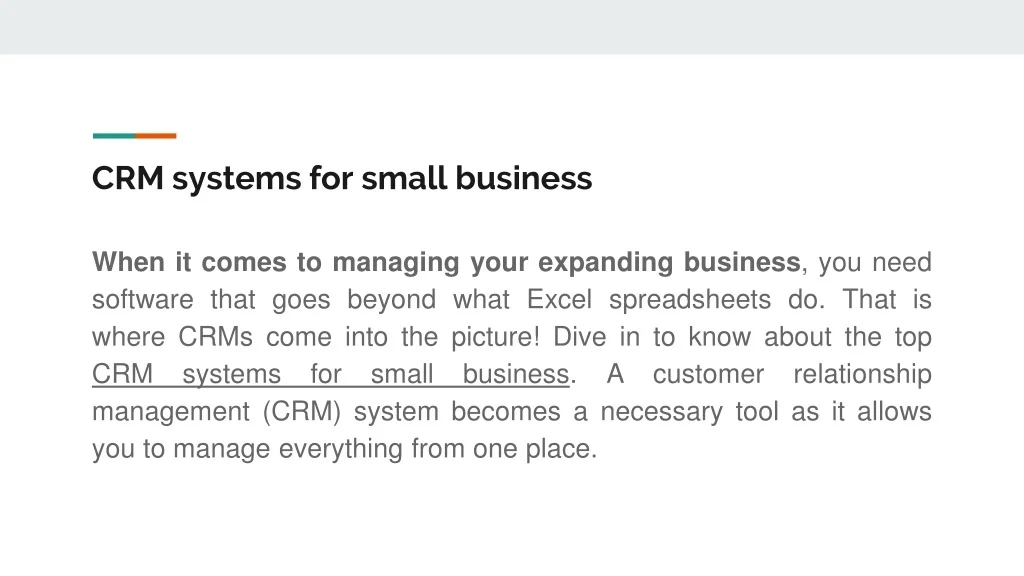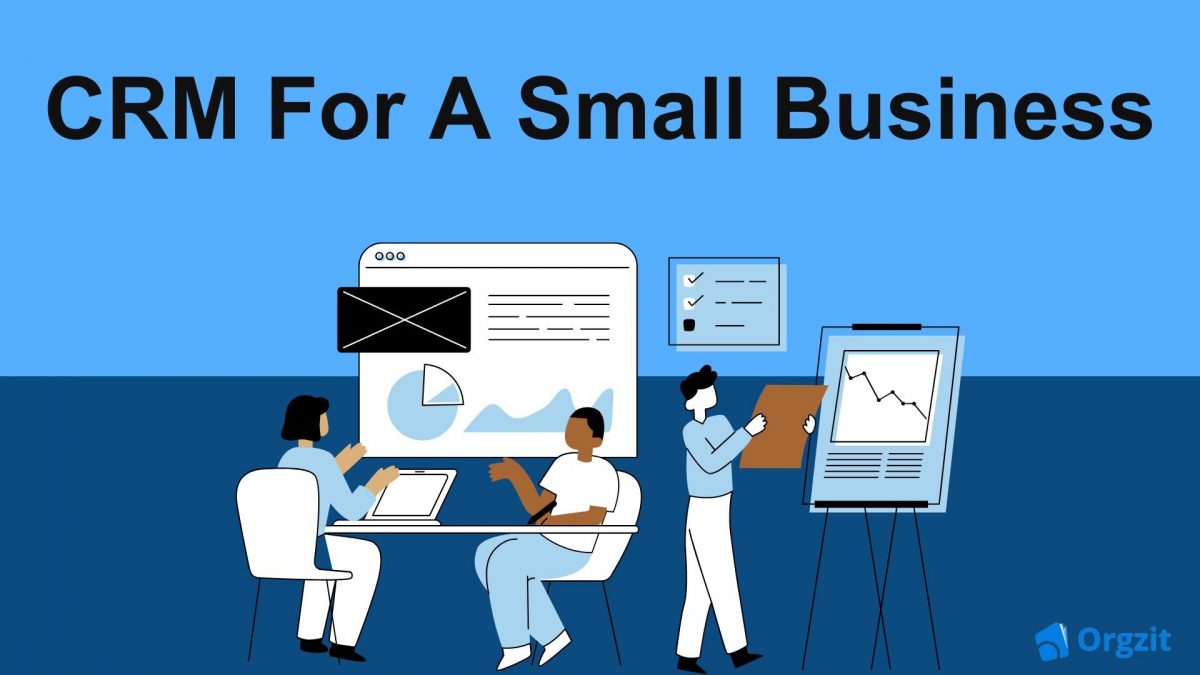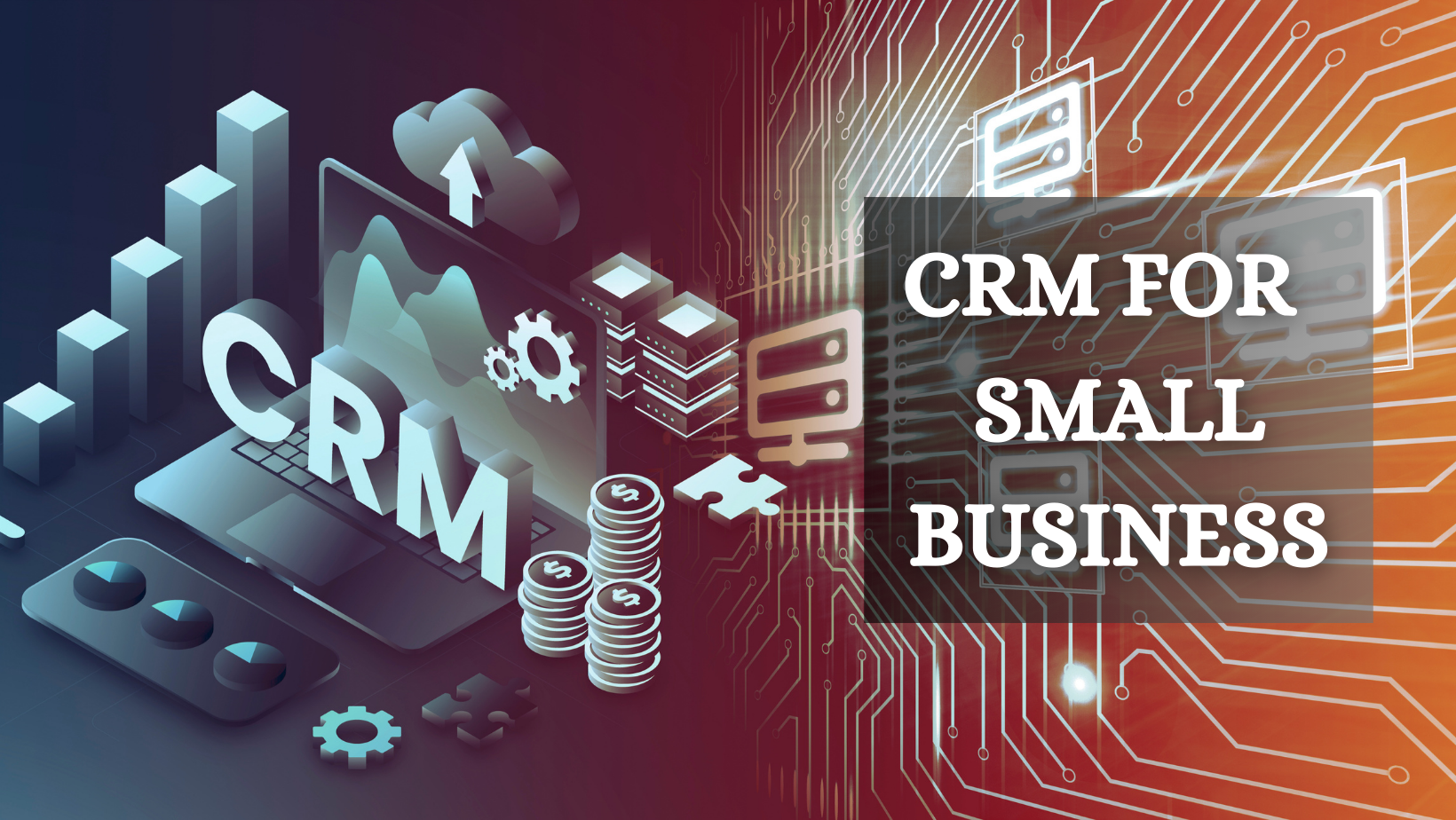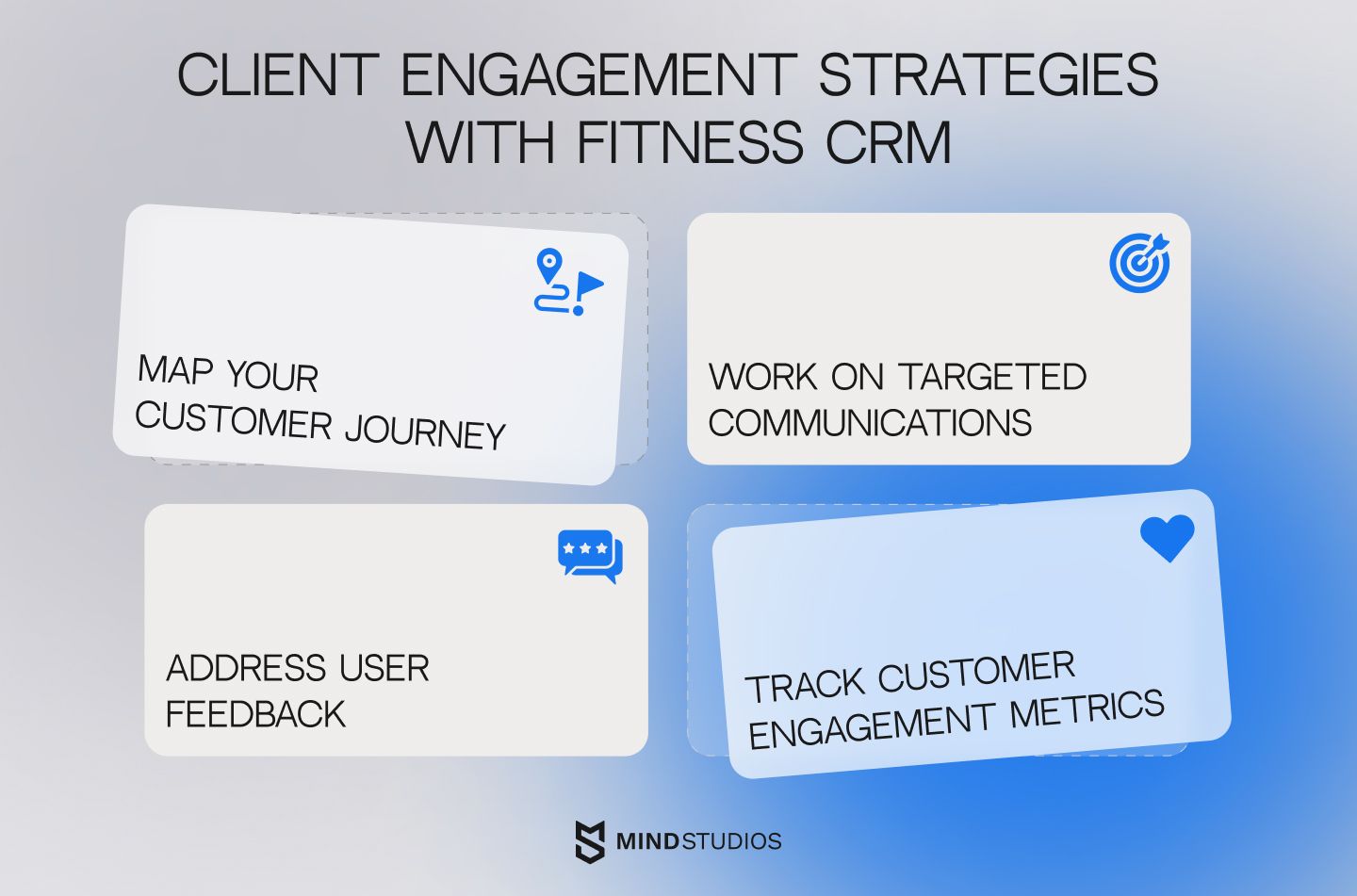
Introduction: Why Your Small Business Needs a CRM
Running a small business is like juggling chainsaws while riding a unicycle – exhilarating, but also terrifyingly prone to disaster. You’re constantly wearing multiple hats, from sales and marketing to customer service and finance. In the whirlwind of daily operations, it’s easy for things to slip through the cracks. This is where a Customer Relationship Management (CRM) system swoops in to save the day.
A CRM isn’t just a fancy piece of software; it’s the central nervous system of your business. It’s where you store, organize, and manage all your interactions with customers and potential customers. Think of it as a digital Rolodex on steroids, but with the power to track leads, automate tasks, personalize communication, and ultimately, boost your bottom line.
This tutorial will walk you through everything you need to know about CRM for small businesses. We’ll cover the basics, explore different CRM options, guide you through implementation, and offer tips on maximizing its impact. By the end, you’ll be equipped to choose, implement, and leverage a CRM to transform your business from a chaotic juggling act into a well-oiled machine.
Understanding the Fundamentals of CRM
Before diving into the nitty-gritty, let’s clarify what CRM actually *is*. CRM is a strategy, a process, and a technology. At its core, CRM is about building and nurturing relationships with your customers. It’s about understanding their needs, preferences, and behaviors to provide them with exceptional experiences. It’s about making them feel valued and appreciated, so they keep coming back for more.
The key components of a CRM system typically include:
- Contact Management: This is the foundation of any CRM. It involves storing and organizing customer data, including names, contact information, purchase history, and interactions.
- Lead Management: Tracking and managing potential customers (leads), from initial contact to conversion. This involves lead scoring, segmentation, and nurturing campaigns.
- Sales Automation: Automating repetitive sales tasks, such as email follow-ups, appointment scheduling, and quote generation, to free up your sales team’s time.
- Marketing Automation: Automating marketing tasks, such as email marketing campaigns, social media posting, and lead nurturing.
- Customer Service: Providing excellent customer support through features like ticketing systems, knowledge bases, and live chat.
- Reporting and Analytics: Tracking key performance indicators (KPIs) like sales figures, customer satisfaction, and marketing campaign performance to gain insights and make data-driven decisions.
The benefits of implementing a CRM system are numerous, including:
- Improved Customer Relationships: By centralizing customer data and providing a 360-degree view of each customer, you can personalize interactions and build stronger relationships.
- Increased Sales: CRM systems help you identify and nurture leads, track sales opportunities, and close deals more efficiently, leading to higher sales figures.
- Enhanced Customer Satisfaction: By providing better customer service and support, CRM systems can significantly improve customer satisfaction and loyalty.
- Increased Efficiency: Automation features streamline workflows and free up your team’s time, allowing them to focus on more strategic tasks.
- Better Decision-Making: Reporting and analytics provide valuable insights into your business performance, enabling you to make data-driven decisions.
Choosing the Right CRM for Your Small Business
The CRM market is flooded with options, each with its own strengths and weaknesses. Choosing the right one for your small business requires careful consideration of your specific needs, budget, and technical capabilities. Here’s a breakdown of the key factors to consider:
- Your Business Needs: What are your primary goals for implementing a CRM? Do you need to focus on sales, marketing, customer service, or a combination of all three? Identify the specific features and functionalities that are essential for your business. Consider the size of your business and the number of users who will need access to the CRM.
- Budget: CRM pricing varies widely, from free options to enterprise-level solutions. Determine how much you’re willing to spend on a CRM, taking into account monthly subscription fees, implementation costs, and potential training expenses.
- Ease of Use: A user-friendly CRM is crucial, especially for small businesses with limited IT resources. Look for a system with an intuitive interface, easy-to-understand navigation, and minimal technical jargon.
- Features and Functionality: Does the CRM offer the features you need, such as contact management, lead management, sales automation, marketing automation, and customer service tools? Consider whether it integrates with other tools you already use, such as email marketing platforms, accounting software, and social media channels.
- Scalability: Choose a CRM that can grow with your business. As your business expands, you’ll need a system that can handle more users, data, and features.
- Integration: Does the CRM integrate with the other tools and platforms you use daily? This includes email marketing services, accounting software, and other business applications. Seamless integration streamlines your workflow and eliminates the need for manual data entry.
- Customer Support: Is the CRM provider known for its excellent customer support? Look for options with responsive customer service, helpful documentation, and training resources.
Here are some popular CRM options for small businesses, along with their key strengths:
- Zoho CRM: Known for its affordability, ease of use, and comprehensive features. It’s a great all-around option for various business needs.
- HubSpot CRM: A free CRM with powerful features, particularly for marketing and sales. It’s a strong choice for businesses focused on inbound marketing.
- Salesforce Sales Cloud Essentials: A scaled-down, more affordable version of the industry-leading Salesforce CRM.
- Pipedrive: Designed specifically for sales teams, with a focus on visual pipelines and deal tracking.
- Freshsales: User-friendly and packed with features, including built-in phone and email integration.
- Insightly: Ideal for small businesses looking for a CRM that combines sales, marketing, and project management functionalities.
Before making a decision, take advantage of free trials or demos to test out different CRM systems and see which one best fits your needs and preferences. Read reviews and compare the features and pricing of different options.
Step-by-Step Guide to Implementing a CRM
Implementing a CRM system can seem daunting, but with a well-defined plan, you can make the process smooth and successful. Here’s a step-by-step guide:
- Define Your Goals and Objectives: What do you hope to achieve with your CRM? Set clear, measurable goals, such as increasing sales, improving customer satisfaction, or streamlining marketing efforts.
- Choose Your CRM: Based on your needs, budget, and research, select the CRM system that best fits your business.
- Plan Your Implementation: Create a detailed implementation plan that outlines the steps involved, the timeline, and the resources required.
- Clean and Organize Your Data: Before importing your data into the CRM, clean it up and organize it. Remove duplicates, correct errors, and standardize formatting.
- Import Your Data: Import your customer data, including contacts, leads, and sales information, into the CRM.
- Customize Your CRM: Configure the CRM to meet your specific needs. Customize fields, workflows, and reports to match your business processes.
- Train Your Team: Provide training to your team members on how to use the CRM effectively. Offer training materials, tutorials, and ongoing support.
- Test and Refine: Test the CRM to ensure it’s working as expected. Make adjustments and refinements as needed.
- Go Live: Once you’re confident that the CRM is set up correctly and your team is trained, launch the system.
- Monitor and Evaluate: Track your progress, monitor key metrics, and evaluate the effectiveness of the CRM. Make adjustments as needed to optimize its performance.
Data Migration Tips:
Data migration can be a tricky part. Here’s how to make it easier:
- Back Up Your Data: Always back up your existing data before importing it into a new system. This ensures that you have a copy of your data in case something goes wrong.
- Map Your Fields: Map the fields from your existing data source to the corresponding fields in the CRM. This ensures that your data is imported correctly.
- Test Your Import: Import a small sample of your data into the CRM to test the import process. Verify that the data is imported correctly and that there are no errors.
- Clean Your Data: Clean your data before importing it into the CRM. Remove duplicates, correct errors, and standardize formatting.
- Use a Data Migration Tool: Consider using a data migration tool to automate the data import process. These tools can help you map your fields, clean your data, and import your data quickly and efficiently.
Maximizing the Impact of Your CRM
Once your CRM is up and running, it’s time to maximize its impact. Here are some tips for getting the most out of your CRM investment:
- Use the CRM Consistently: Make the CRM an integral part of your daily workflow. Encourage your team to use it regularly to record customer interactions, track leads, and manage sales opportunities.
- Keep Your Data Up-to-Date: Regularly update your customer data to ensure its accuracy. This includes contact information, purchase history, and any other relevant information.
- Personalize Your Communication: Use the CRM to personalize your communication with customers. Segment your audience, tailor your messages, and provide relevant content to build stronger relationships.
- Automate Your Tasks: Automate repetitive tasks, such as email follow-ups, appointment scheduling, and quote generation, to free up your team’s time and improve efficiency.
- Track Your Key Performance Indicators (KPIs): Monitor your KPIs to track your progress and measure the effectiveness of your CRM. Use the data to identify areas for improvement and make data-driven decisions.
- Integrate with Other Tools: Integrate your CRM with other tools you use, such as email marketing platforms, accounting software, and social media channels, to streamline your workflow and improve data accuracy.
- Train and Retrain Your Team: Provide ongoing training to your team on how to use the CRM effectively. Keep them informed of new features, updates, and best practices.
- Seek Feedback: Gather feedback from your team and customers to identify areas for improvement and optimize your CRM usage.
- Regularly Review and Optimize: Don’t set it and forget it. Review your CRM setup regularly and make adjustments as your business evolves. This might mean adding new fields, modifying workflows, or exploring new integrations.
Advanced CRM Strategies for Small Businesses
- Lead Scoring: Implement a lead scoring system to prioritize leads based on their likelihood of converting into customers. This helps your sales team focus their efforts on the most promising leads.
- Workflow Automation: Automate complex sales and marketing processes using workflow automation. This can include sending automated email sequences, assigning tasks, and updating lead statuses.
- Social Media Integration: Integrate your CRM with your social media channels to monitor social media activity, track mentions, and engage with your customers.
- Customer Segmentation: Segment your customer base based on demographics, purchase history, and other factors. This allows you to tailor your marketing messages and personalize your customer experiences.
- Reporting and Analytics Dashboards: Create customized dashboards to track your key performance indicators (KPIs) and gain insights into your business performance.
Common CRM Mistakes to Avoid
Even with the best intentions, small businesses can make mistakes when implementing and using a CRM. Here are some common pitfalls to avoid:
- Not Defining Clear Goals: Without clear goals, you won’t know what you’re trying to achieve with your CRM. Define your objectives before you start.
- Choosing the Wrong CRM: Selecting a CRM that doesn’t meet your needs is a recipe for frustration. Research and select the right system for your business.
- Poor Data Quality: Inaccurate or incomplete data renders your CRM ineffective. Invest time in cleaning and maintaining your data.
- Lack of User Adoption: If your team doesn’t use the CRM, it’s a wasted investment. Provide training and encourage consistent usage.
- Not Customizing the CRM: A generic CRM won’t fit your unique business needs. Customize the system to match your processes.
- Over-Complicating the System: Avoid adding unnecessary features or workflows. Keep it simple and focused on your core needs.
- Ignoring Customer Feedback: Don’t be afraid to ask your customers what they want and need. Use this feedback to improve your CRM usage.
Conclusion: Embracing CRM for Small Business Success
Implementing a CRM system is a game-changer for small businesses. It’s not just about managing customer data; it’s about building stronger relationships, improving efficiency, and driving growth. By following the steps outlined in this tutorial, you can choose the right CRM, implement it successfully, and maximize its impact on your business.
Remember, the key to CRM success is consistency, personalization, and a commitment to continuous improvement. Embrace the power of CRM, and watch your small business thrive.
The journey of a thousand miles begins with a single step. Start your CRM journey today and unlock the full potential of your customer relationships!


